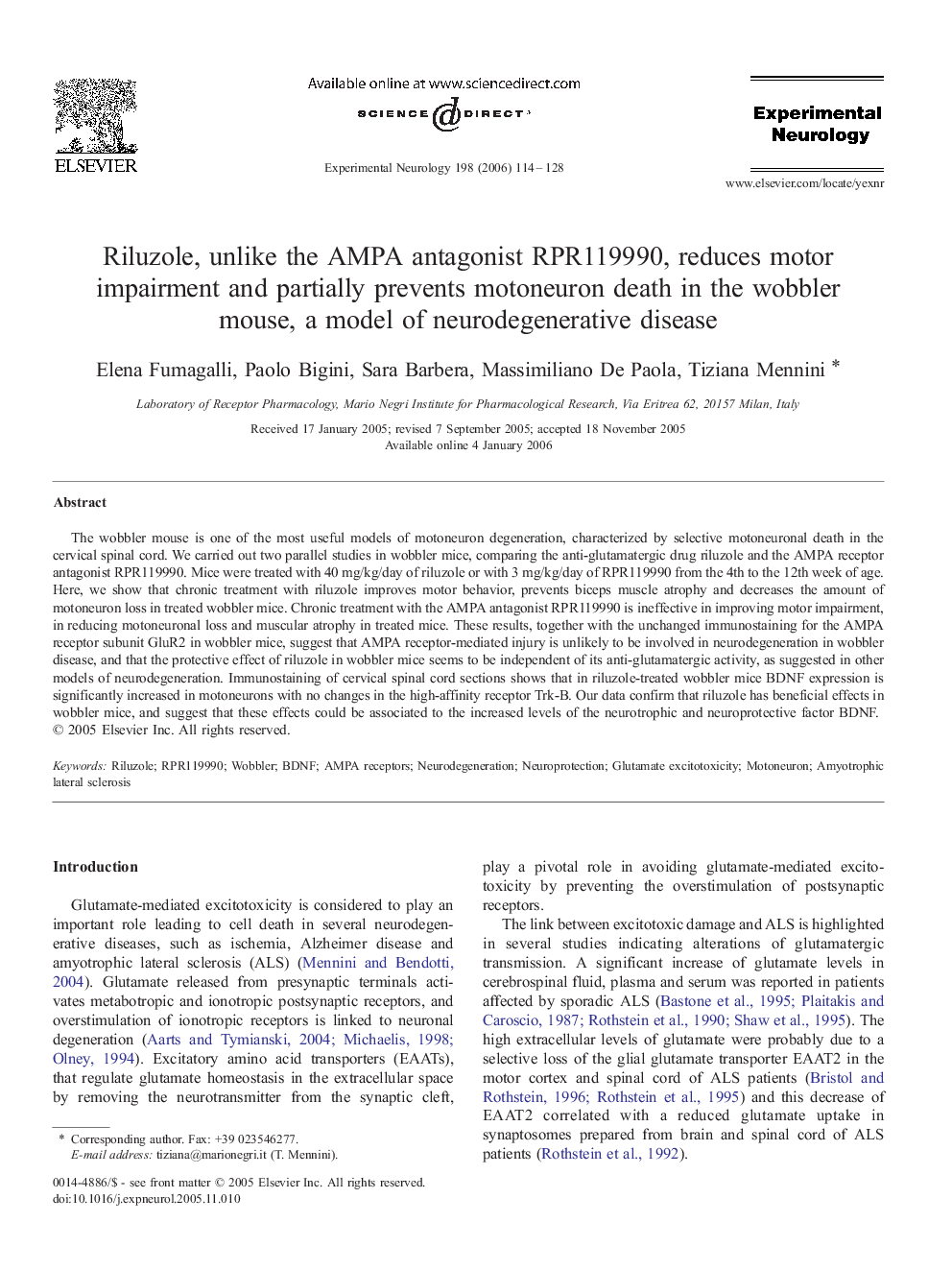| Article ID | Journal | Published Year | Pages | File Type |
|---|---|---|---|---|
| 3057431 | Experimental Neurology | 2006 | 15 Pages |
The wobbler mouse is one of the most useful models of motoneuron degeneration, characterized by selective motoneuronal death in the cervical spinal cord. We carried out two parallel studies in wobbler mice, comparing the anti-glutamatergic drug riluzole and the AMPA receptor antagonist RPR119990. Mice were treated with 40 mg/kg/day of riluzole or with 3 mg/kg/day of RPR119990 from the 4th to the 12th week of age. Here, we show that chronic treatment with riluzole improves motor behavior, prevents biceps muscle atrophy and decreases the amount of motoneuron loss in treated wobbler mice. Chronic treatment with the AMPA antagonist RPR119990 is ineffective in improving motor impairment, in reducing motoneuronal loss and muscular atrophy in treated mice. These results, together with the unchanged immunostaining for the AMPA receptor subunit GluR2 in wobbler mice, suggest that AMPA receptor-mediated injury is unlikely to be involved in neurodegeneration in wobbler disease, and that the protective effect of riluzole in wobbler mice seems to be independent of its anti-glutamatergic activity, as suggested in other models of neurodegeneration. Immunostaining of cervical spinal cord sections shows that in riluzole-treated wobbler mice BDNF expression is significantly increased in motoneurons with no changes in the high-affinity receptor Trk-B. Our data confirm that riluzole has beneficial effects in wobbler mice, and suggest that these effects could be associated to the increased levels of the neurotrophic and neuroprotective factor BDNF.
